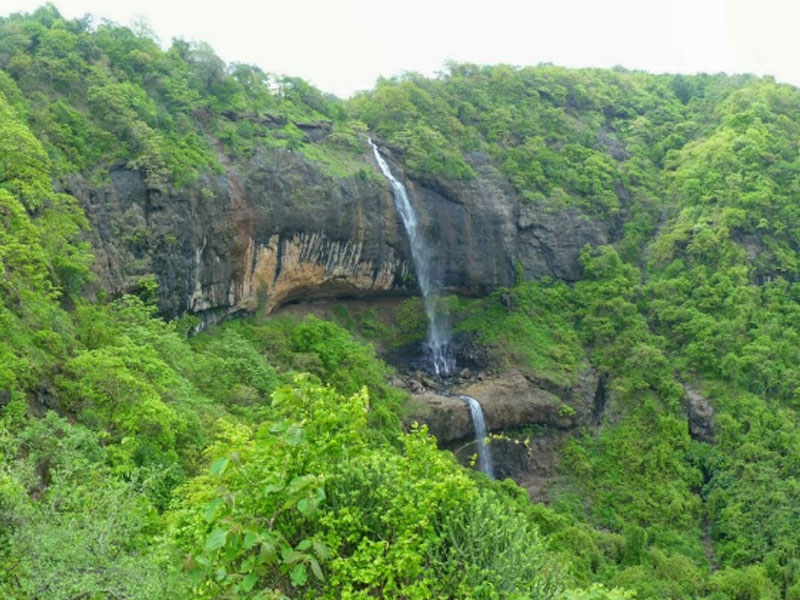Forts in Alibaug
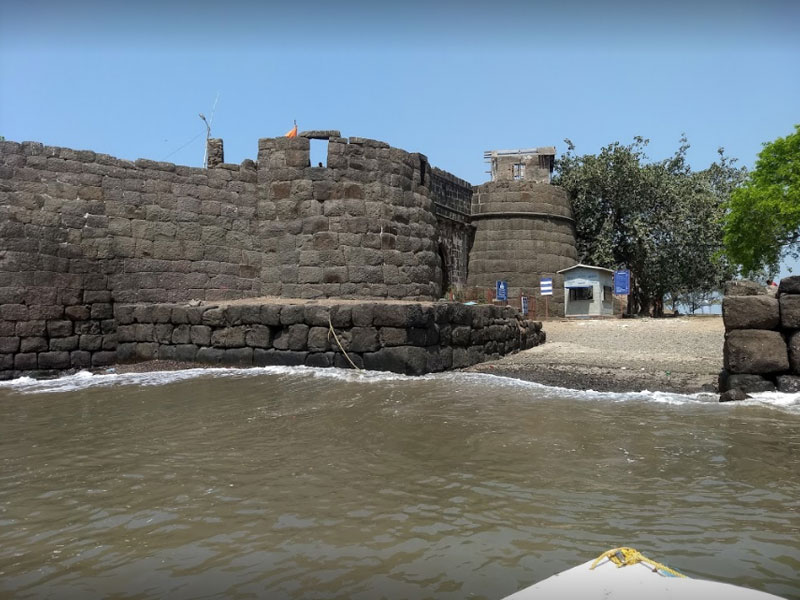
Alibaug / Kulaba Fort
It is located 1 km across from Alibaug beach. The Great Maratha-warrior Shivaji started the construction of this sea fort in 1680 A.D. The fort is 900 ft. long, 350 ft. wide and has 25 ft. high walls which have 17 bastions (burj) on all sides. The fort has been standing for over 300 years.
The fort can only be accessed during ebb tide through a narrow strip of land which goes underwater during high tide. The huge front entrance arch has tigers, peacocks, elephants sculpted on it. Beyond that comes another small gate. Next to that gate are the shrines of Mahishasura and Padmavathi, Kanifnath, Sri Ganesh and the fort-deity. Next to them comes the sourthern gate which is variously known as Darya/Yeshwant Darwaja. Raghoji Angre built a beautiful temple of Shri Ganesh in front of the sweet water tank in 1759.
The inner sanctum sanctorum includes images of Sri Ashtabhuja Devi, Shiv, Vishnu, Surya. The collection of the pantheon lends it the name ‘Shri Ganesh Panchayatan’. Within the premises, you will find a well and a tank of sweet water in the midst of sea! On one of the 17 bastions, two cannons in intact condition can be seen. The Archaeological Survey of India charges a token entry Fee for the visitors. The Ganesh Temple (Mandir) is in the fort. The length is 20 meter, width is 6 meter and 15 meter of this popular Ganesh Temple. The most people visit this temple at Ganesh Jayanti.
The two cannon in good condition are present on this historical fort.
Murud Janjira Fort
This overwhelming guardian of the Siddi naval prowess over the Arabian sea, can be approached in sail boats, which leave from Rajpuri jetty, 5 kms from Murud. As we land at the front gate of the fort, two formidable bastions can be seen guarding the huge gate. Here is a sculpture in stone depicting a Lion that has overpowered six elephants.
The main gate is followed by another gate where 3 lungers/anchors are clearly visible in front of shrine of 5 Peers (peerpanchayatan). Opposite of that is a big sweet water tank. Around that stand Khasha Siddi
Masjid and ruins of houses. Next comes Surul Khan’s mansion (wada). In the backyard, remnants of Hindu sculptures are visible. During archaeological excavations in 1985, temple ruins and a ‘Shivaling’ was found. On the background, fortified bulwarks with guns positioned, are unmistakable. There are 24 bastions in all, having their separate names. Special attraction of this fort is 3 Gigantic Cannons named Kalalbangdi, Chavri and Landa Kasam. Another gate to the west is sea- facing, called ‘Darya Darwaza’.
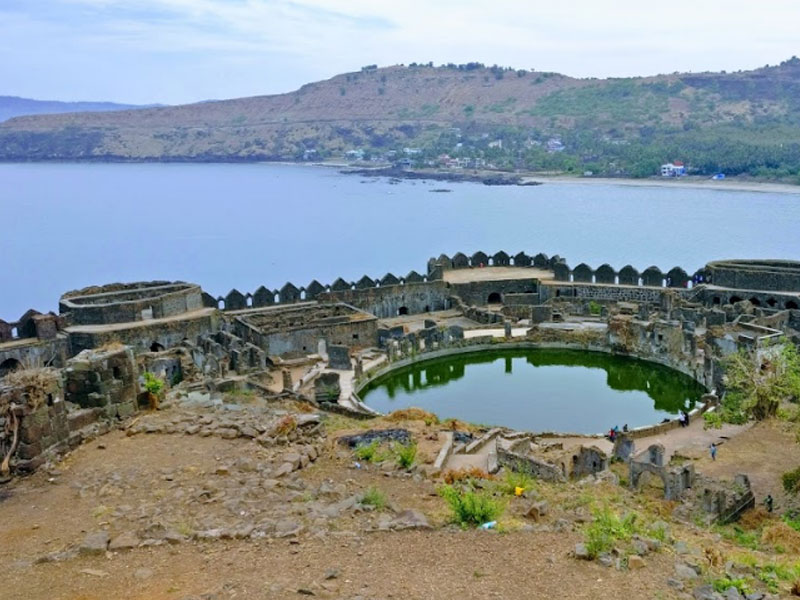
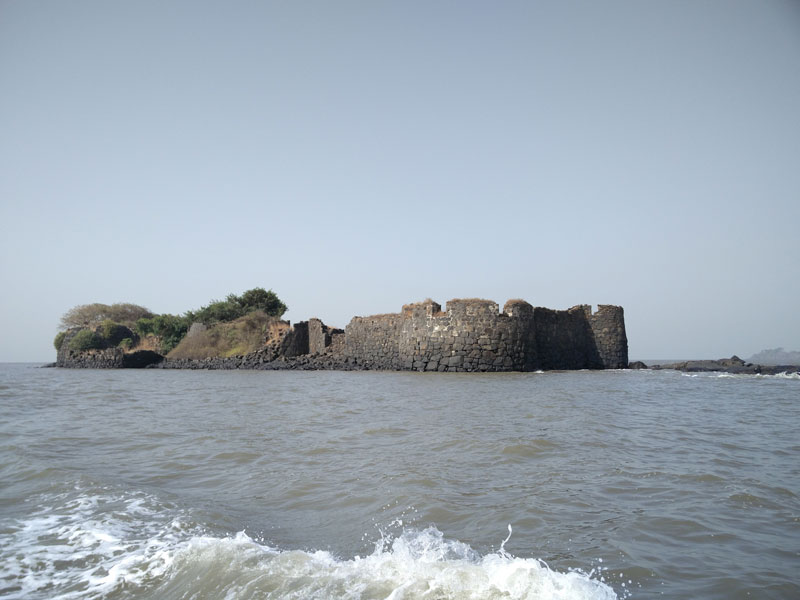
Khanderi Underi Fort
Khanderi is located 5 km off the coast of Maharashtra and 20 km south of Mumbai. Khanderi, along with its sister fort Underi (Jaidurg) formed the major fortification along the Maharashtra coast, the former falling under Shivaji’s control and the latter under his opponents, the Siddis.
The island consists of two high hills, one facing north and the other facing south. Initially, the islands of Underi and Khanderi were uninhabited. In 1679, Khanderi was occupied by the forces of Shivaji under the leadership of Maynak Bhandari, who oversaw the building of the fortifying walls. Subsequently, Khanderi fort was built during the reign of the Maratha king Shivaji in 1679 CE to keep a check on the Siddis at Murud-Janjira fort and was the site of many battles between Shivaji’s forces and the navy of Siddi. It contained two wells to supply water to the forces within, and a temple of Sri Betal.
Kasa Fort
When Shivaji the Great decidied to take on the Siddis of Janjira, his admiral, Daulat Khan, built this fort on an island next to Janjira. The rock, on which the fort was built, was called Kasa and the fort was named Padmadurg.
The fort has six bastions, some of them devastated by Gun attack from the famous ‘kalalbangdi’ gun in Janjira. Kasa was soon overpowered by Siddis and used as a Jail. Private boat can be hired to visit this fort.
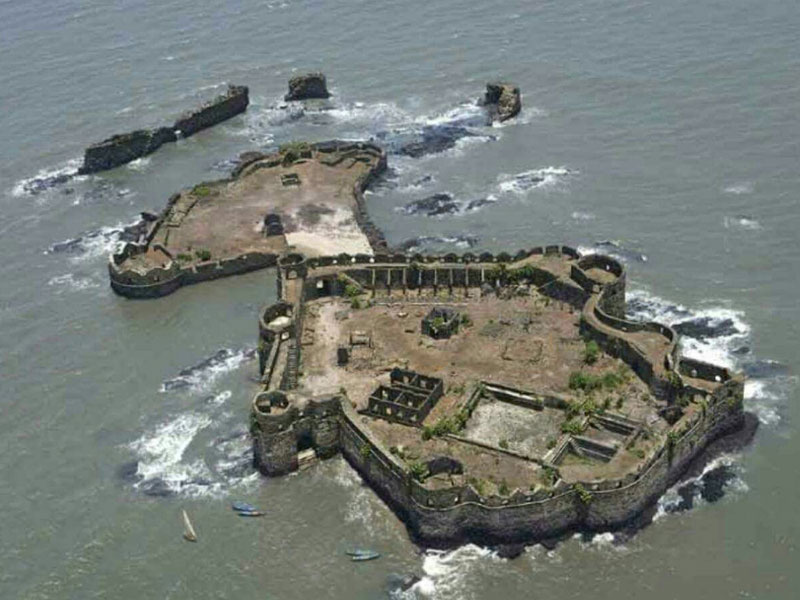
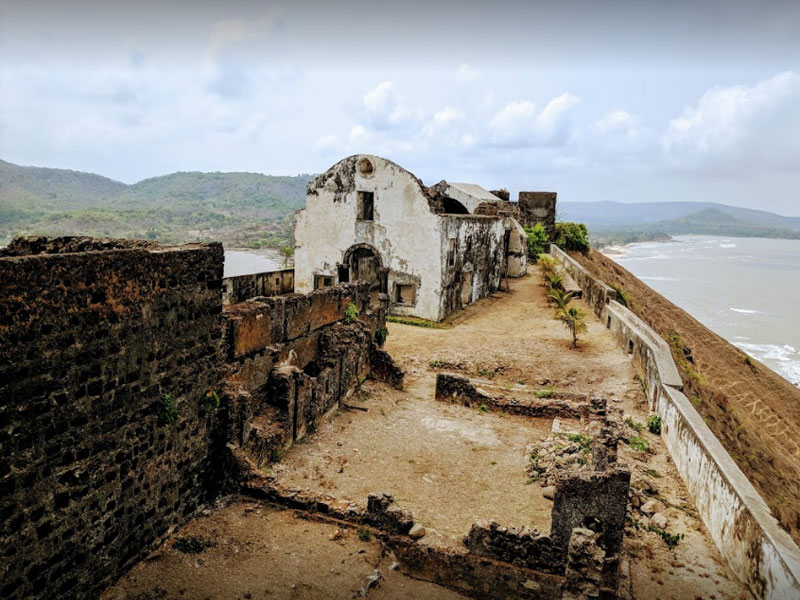
Korlai Fort
Korlai Fort is a Portuguese fortification in the town of Korlai, Maharashtra, India. It was built on an island which guards the way to the Revdanda Creek. It was meant as a companion to the fort at Chaul. At this strategic position the Portuguese could use it to defend their province which stretched from Korlai to Bassein. Vestiges of the Portuguese occupation are manifested in the distinct dialect of the Korlai villages inhabitants which is a Luso-Indian Portuguese Creole called Kristi.
Sagargad Fort
Sagargad Fort is located in Alibaug taluka of Raigad District. The path to the fort starts from Khandale village on Alibaug-Pen Road. This fort can be visited all round the year. A gentle walk of 2 hours from the village Khandale can reach us up to the fort. There is a small temple of Mahishasurmardini and a water tank on the way. Also, there is “Dodhane” waterfall on the way. The beauty of the waterfall can be seen in Monsoon. There is a Siddheshwar monastery on the Sagargad machi. The pedestrians can make a night halt in the monastery.
